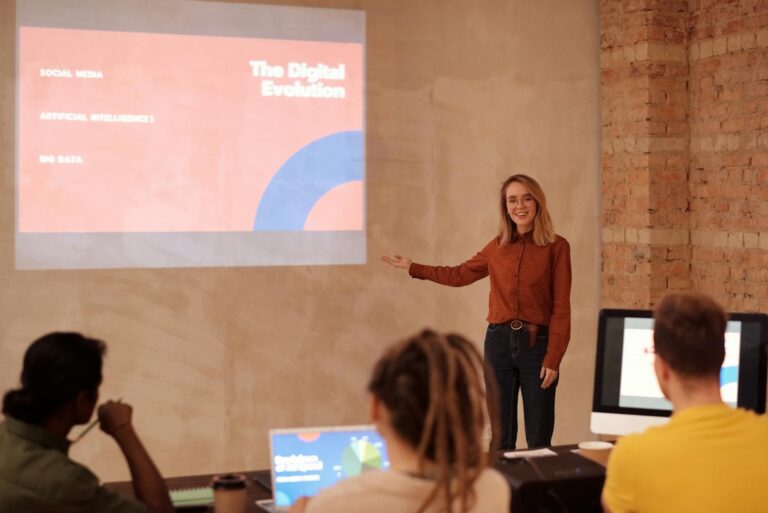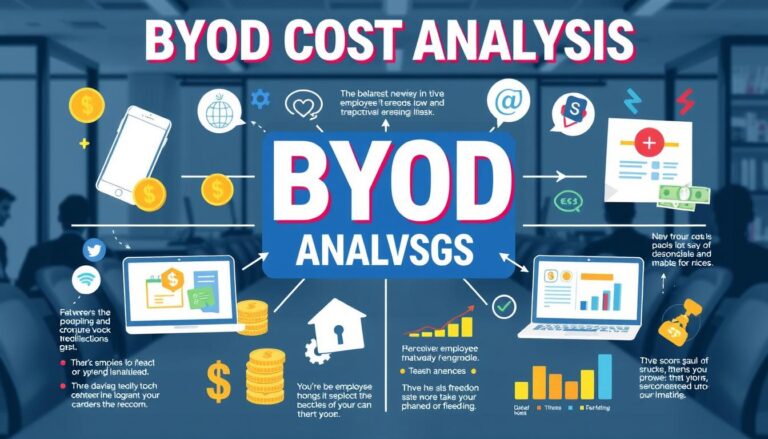2025 Tech Playbook AI Cloud Next-Gen Digital Growth
The 2025 Tech Playbook: Accelerating Growth with AI, Cloud, and Next-Gen Digital Innovation
Estimated reading time: 15-20 minutes
Key Takeaways
- AI Automation and Intelligent Delegation: AI is transforming business operations, customer engagement, and efficiency through smart workflows and intelligent delegation, moving beyond basic chatbots.
- Next-Gen Development for Speed and Personalization: Web development with frameworks like Next.js and React, alongside cross-platform mobile development using Flutter and React Native, is crucial for delivering lightning-fast, highly personalized, and performant user experiences.
- Cloud as the Foundation for Scalability: Serverless architectures, microservices, and robust DevOps practices are the backbone of modern, scalable, and resilient software systems, reducing operational overhead and accelerating innovation.
- User-Centric and Inclusive Design: Modern UI/UX prioritizes deep user understanding, accessibility (WCAG compliance), and immersive experiences (AR, VUIs) to create intuitive, emotionally resonant, and universally usable digital products.
- Empowering Small Businesses: Cost-effective strategies, leveraging no-code/low-code AI automation, and cloud-native solutions enable small businesses and startups to achieve digital transformation, scale operations, and gain a competitive edge.
Table of Contents
- 1. Web Development Trends 2025: Building the Future of Digital Experiences
- 2. Mobile App Development 2025: Cross-Platform Prowess and Intuitive Experiences
- 3. Cloud Computing and DevOps: The Engine of Modern Software Development
- 4. AI Automation for Businesses: Transforming Operations and Customer Engagement
- 5. Modern UI/UX Design: Crafting Intuitive and Inclusive Digital Journeys
- 6. Digital Transformation Strategies and Enterprise Digital Adoption
- 7. Empowering Small Businesses and Startups with Tech Innovation
- Frequently Asked Questions (FAQs)
- Conclusion: Pioneering the Digital Frontier of 2025
The 2025 Tech Playbook: Accelerating Growth with AI, Cloud, and Next-Gen Digital Innovation
The digital landscape is in a perpetual state of evolution, and as we approach 2025, the pace of change is only intensifying. Businesses, developers, and tech enthusiasts alike are grappling with a tidal wave of innovation, from hyper-intelligent AI systems to agile cloud infrastructures and increasingly sophisticated user experiences. Navigating these 2025 tech trends is not merely about adopting new tools; it’s about understanding the strategic implications of each advancement and integrating them into a cohesive digital transformation strategy.
This comprehensive guide serves as your 2025 tech playbook, breaking down the complex trends reshaping web development, mobile app innovation, cloud computing and DevOps, AI automation for businesses, and modern UI/UX design. We’ll explore how these technologies are converging to create unprecedented opportunities for accelerated growth, improved performance, and radical operational transformation. For companies seeking to scale operations, reduce costs, and enhance efficiency through intelligent delegation and automation solutions, understanding these trends is paramount. AITechScope, a leading provider of virtual assistant services specializing in AI-powered automation and n8n workflow development, is at the forefront of helping businesses leverage these cutting-edge AI tools and technologies.
From startups eyeing rapid market entry to established enterprises seeking sustained competitive advantage, the insights within this article will equip you with the knowledge to thrive in the dynamic digital world of 2025 and beyond.
1. Web Development Trends 2025: Building the Future of Digital Experiences
Web development trends are moving towards faster, more intelligent, and highly personalized user experiences. The static websites of yesterday are being replaced by dynamic, AI-powered platforms that adapt to individual user needs and preferences.
1.1 The Rise of AI-Powered Web Apps and Personalization
Artificial intelligence is no longer an optional add-on; it’s becoming integral to the core functionality of web applications. In 2025, expect to see a surge in AI-powered web apps that leverage machine learning for:
- Hyper-Personalization: Tailoring content, recommendations, and interfaces based on user behavior, demographics, and real-time interactions. This goes beyond simple cookies to predictive analytics that anticipate user needs.
- Intelligent Search and Discovery: AI-driven search engines within websites providing more accurate and context-aware results, enhancing user satisfaction.
- Automated Content Generation: AI assisting with creating dynamic, engaging content for various user segments, saving time and resources.
- Predictive Analytics: Forecasting user churn, identifying sales opportunities, and optimizing conversion funnels through data analysis.
These capabilities allow businesses to “Make Your SaaS Smarter: 3 Low-Effort AI Features That Delight Users,” creating sticky, engaging experiences that drive customer loyalty.
1.2 Next.js and React Performance: The Foundation of Fast Marketing Sites
Performance remains a critical factor for user engagement and SEO. In 2025, frameworks like Next.js, built on React, will continue to dominate for their ability to deliver lightning-fast web experiences.
1.2.1 Why Next.js is Ideal for Modern Web Development
Next.js offers a powerful combination of server-side rendering (SSR), static site generation (SSG), and incremental static regeneration (ISR), which are crucial for optimal Next.js and React performance. This makes it an excellent choice for:
- Fast Marketing Sites: For small businesses needing a quick, high-performing online presence, “Next.js for Small Businesses: Build a Fast Marketing Site in One Weekend” is a tangible reality. Its pre-rendering capabilities mean users see content almost instantly.
- SEO Optimization: Google favors fast-loading sites. Next.js natively supports SEO best practices, giving businesses a significant edge.
- Scalability: From a Next.js small business site to large enterprise applications, Next.js can scale efficiently.
For developers, a Next.js beginner guide will become a foundational resource, given its growing importance.
1.2.2 Elevating React Performance Optimization Techniques
Even with Next.js, performance optimization techniques in React are vital. Strategies such as:
- Code Splitting: Loading only the necessary code for a given route or component.
- Memoization (React.memo, useCallback, useMemo): Preventing unnecessary re-renders of components.
- Virtualization: Efficiently rendering long lists by only displaying visible items.
- Image Optimization: Using modern formats (WebP, AVIF) and responsive images.
These techniques, as highlighted in “5 Simple React Performance Fixes That Reduce Page Load by Seconds,” can drastically cut page load times, creating a smoother user experience and improving core web vitals. We’ve seen “Real-World Case Study: How We Cut Page Load by 60% for a Client” purely through focused optimization.
1.3 Headless CMS WordPress and Micro Frontends
Content delivery and application architecture are also seeing significant shifts.
1.3.1 The Power of Headless CMS WordPress
Headless CMS WordPress decouples the content management backend from the frontend presentation layer. This offers immense flexibility:
- Omnichannel Content Delivery: Content can be easily published across websites, mobile apps, IoT devices, and more from a single source.
- Improved Performance and Security: The frontend can be built with modern, fast frameworks (like Next.js) while WordPress handles content, often with less bloat. Focus on “WordPress Without the Bloat: Lightweight Plugins That Actually Help SEO” is key here.
- Developer Freedom: Frontend developers are no longer constrained by WordPress’s templating system.
1.3.2 Micro Frontends: Modularity at Scale
Inspired by microservices, microservices architecture extends to the frontend with micro frontends. This approach breaks down a monolithic frontend into smaller, independently deployable units. “Micro Frontends: When They Help and When They Hurt (Practical Examples)” illustrates their benefits for:
- Large Teams: Allowing different teams to work on separate parts of the UI independently.
- Technology Agnosticism: Different micro frontends can use different frameworks.
- Easier Maintenance and Upgrades: Isolating changes to smaller parts of the application.
However, they also introduce complexity in terms of integration and state management, requiring careful consideration.
1.4 Responsive UI Design and Accessibility
Beyond performance, user interface and experience are paramount. Responsive UI design is a given, but its evolution in 2025 focuses on truly adaptive experiences that go beyond mere screen size adjustments. This includes:
- Context-Aware UIs: Adapting layouts and content based on device, location, time of day, and user intent.
- Accessibility First: Designing interfaces that are usable by everyone, regardless of ability. This means adhering to WCAG guidelines, ensuring proper contrast, keyboard navigation, and screen reader compatibility. “Designing Accessible Buttons: A Non-Designer’s Guide (Figma Tips)” provides practical steps towards this crucial goal.
2. Mobile App Development 2025: Cross-Platform Prowess and Intuitive Experiences
Mobile app development 2025 is characterized by the continued dominance of cross-platform frameworks, pushing the boundaries of what’s possible with a single codebase. The focus remains on delivering native-like performance and highly intuitive user interfaces.
2.1 Flutter vs React Native 2025: The Strategic Choice
The debate between Flutter vs React Native in 2025 remains central for businesses and startups looking to develop efficient, performant mobile applications. Both frameworks offer compelling advantages for cross-platform mobile app development, allowing developers to write code once and deploy it across iOS and Android.
2.1.1 React Native’s Maturity and Ecosystem
React Native, backed by Facebook, boasts a mature ecosystem, a vast developer community, and the flexibility of JavaScript/TypeScript. Its ability to reuse React components from web projects can be a significant advantage for teams already familiar with React. For startups, leveraging existing web development talent can accelerate market entry.
2.1.2 Flutter’s Performance and Expressive UI
Flutter, Google’s UI toolkit, stands out for its superior performance and highly customizable, beautiful UIs. By compiling directly to native ARM code, Flutter apps often achieve near-native performance. Its “hot reload” feature dramatically speeds up development cycles, making it incredibly appealing for rapid prototyping and iteration. For businesses prioritizing stunning visuals and smooth animations, Flutter often has an edge. The ability to “Build a Simple Cross-Platform App with Flutter: From Idea to Play Store” highlights its efficiency.
2.1.3 Which Mobile Framework for Startups?
The choice of “which mobile framework for startups” in 2025 largely depends on existing team skills, project complexity, and specific performance/UI requirements.
- Choose React Native if: Your team has strong React/JavaScript skills, you need a vast library ecosystem, or you plan extensive code sharing with web projects.
- Choose Flutter if: Performance and highly custom UIs are paramount, you want faster development cycles for smaller teams, or you’re starting fresh with a new development team.
Both are excellent choices for digital innovation for startups, enabling quick deployment and iteration.
2.2 Mobile App UI Trends: Beyond Flat Design
Mobile app UI trends in 2025 will emphasize:
- Immersive Experiences: Integrating AR/VR elements for richer interactions (e.g., virtual try-ons, interactive product views).
- Micro-interactions: Subtle animations and visual feedback that enhance usability and delight users.
- Personalized Interfaces: UIs that adapt dynamically based on user context, habits, and preferences, often powered by on-device AI.
- Voice User Interfaces (VUIs): Increased integration of voice commands and natural language processing for hands-free interaction.
- Ethical and Inclusive Design: Prioritizing accessibility, privacy, and user well-being, ensuring apps are usable and beneficial for all.
3. Cloud Computing and DevOps: The Engine of Modern Software Development
Cloud computing and DevOps practices are the backbone of efficient, scalable, and resilient software development 2025. They enable businesses to innovate faster, reduce operational overhead, and adapt to changing market demands with unprecedented agility.
3.1 Serverless Architecture: Cost-Efficient Scaling for Startups
Serverless architecture represents a paradigm shift in how applications are built and deployed. Instead of managing servers, developers focus solely on writing code (functions) that are executed in response to events, with the cloud provider handling all infrastructure provisioning and scaling.
3.1.1 Benefits of Serverless for Startups
For serverless backend for startups, the benefits are profound:
- Reduced Operational Costs: Pay-per-execution model means you only pay for compute time consumed, making it incredibly cost-efficient for applications with fluctuating traffic. A “serverless AWS cost example” often shows significant savings compared to always-on servers.
- Automatic Scalability: Serverless functions automatically scale up or down based on demand, eliminating the need for manual capacity planning.
- Faster Time-to-Market: Developers can focus on core business logic rather than infrastructure management, accelerating development cycles.
- Elimination of Server Management: No servers to provision, patch, or maintain.
This makes serverless an ideal choice for digital innovation for startups seeking to rapidly deploy and iterate without a large DevOps team.
3.2 CI/CD Automation and DevOps Best Practices
Continuous Integration (CI) and Continuous Delivery (CD) are fundamental to modern DevOps best practices. They automate the software delivery pipeline, from code commit to deployment, ensuring faster, more reliable releases.
3.2.1 CI/CD for Small Teams
Even for CI CD small teams, automation is not a luxury but a necessity. Tools like GitHub Actions, GitLab CI/CD, and AWS CodePipeline simplify the creation of robust pipelines. A “GitHub Actions deploy tutorial” can quickly get small teams up and running with automated deployments without the headache.
- Automated Testing: CI ensures every code change is automatically tested, catching bugs early.
- Frequent Releases: CD allows for rapid, reliable deployment of new features and bug fixes.
- Reduced Manual Errors: Automating repetitive tasks minimizes human error and increases consistency.
AITechScope helps businesses implement robust CI/CD automation workflows, integrating with tools like n8n for custom automations that streamline development and operations, reducing manual overhead and allowing teams to focus on innovation.
3.3 Cloud Migration Strategy and Microservices Architecture
Many businesses are still grappling with legacy systems. A well-defined cloud migration strategy is crucial for transitioning existing applications to the cloud without disruption. “How to Move Your Legacy App to the Cloud Without Breaking It” involves careful planning, phased migration, and often re-architecting applications.
For new applications or refactoring existing ones, microservices architecture continues to gain traction. Breaking down a monolithic application into small, independent, loosely coupled services offers:
- Enhanced Scalability: Each service can be scaled independently.
- Increased Resilience: Failure in one service doesn’t bring down the entire application.
- Technology Diversity: Different services can be written in different languages and frameworks.
- Agile Development: Smaller teams can own and develop specific services autonomously.
This approach is key to building resilient and flexible systems that can evolve with future software development 2025 needs.
4. AI Automation for Businesses: Transforming Operations and Customer Engagement
AI automation for businesses is rapidly moving from theoretical concept to practical, implementable solutions that redefine efficiency and customer interaction. From intelligent workflow systems to sophisticated customer service, AI is the ultimate enabler of enterprise digital adoption.
4.1 Beyond Chatbots: AI-Powered Workflow Automation Tools
While chatbot automation has been a prominent face of AI, its true power lies in streamlining and optimizing internal business processes. Workflow automation tools are increasingly integrating AI to create intelligent, self-optimizing systems. AITechScope specializes in this area, leveraging platforms like n8n to develop bespoke AI-powered automation solutions.
- Automate Repetitive Tasks: AI can take over data entry, report generation, email triage, and other mundane tasks, freeing up human capital. “Automate Repetitive Tasks with No-Code Tools + AI (Save 5–10 Hours/Week)” demonstrates the significant time savings possible.
- Intelligent Delegation: AI can analyze incoming requests or data and automatically route them to the correct department or individual, or even execute the necessary actions without human intervention.
- Predictive Maintenance: AI models can analyze sensor data to predict equipment failures before they occur, optimizing maintenance schedules and reducing downtime.
- Supply Chain Optimization: AI can forecast demand, optimize logistics, and manage inventory more efficiently.
The AI-driven Lab Automation Market is one example of how AI is being deployed in specific industries to revolutionize operations, projecting significant growth by 2034. This showcases the vast potential for specialized AI automation across diverse sectors.
4.2 AI Chatbots for Customer Service and Internal Efficiency
The evolution of AI chatbots for customer service in 2025 goes beyond basic FAQs. They are becoming more conversational, capable of handling complex queries, processing transactions, and providing personalized support.
- 24/7 Support: Providing immediate assistance around the clock, improving customer satisfaction.
- Scalable Customer Engagement: Handling a large volume of inquiries simultaneously without increasing headcount.
- Personalized Interactions: Remembering past interactions and user preferences to offer tailored advice.
- Internal Chatbots: Not just for external customers, internal chatbots can assist employees with HR questions, IT support, and knowledge retrieval, boosting internal efficiency. “How Small Businesses Use Chatbots to Save Time: Real Workflows That Work” illustrates practical scenarios.
AITechScope helps businesses implement and optimize these AI chatbots for customer service and internal applications, integrating them seamlessly into existing systems to enhance efficiency and customer delight.
4.3 SaaS Product Optimization with AI Features
For SaaS providers, integrating AI automation directly into their products is a key competitive differentiator. SaaS product optimization through AI means:
- Intelligent Features: Embedding AI capabilities like predictive analytics, smart recommendations, or automated reporting directly within the SaaS platform.
- Personalized User Journeys: AI guiding users through the product, suggesting features, and optimizing workflows based on their usage patterns.
- Enhanced Security: AI-powered anomaly detection for identifying and preventing security breaches.
This focus on intelligent features is what helps “Make Your SaaS Smarter: 3 Low-Effort AI Features That Delight Users” and fosters long-term user engagement.
4.4 Addressing the Human Element: Employee Excitement and AI Dilemmas
While the benefits of AI are clear, it’s crucial to acknowledge the human aspect. Research by Harvard Business Review highlights that “Leaders Assume Employees Are Excited About AI. They’re Wrong.” This underscores the need for:
- Transparent Communication: Explaining the purpose and benefits of AI implementation to employees.
- Reskilling and Upskilling: Providing training for employees to work alongside AI, transitioning them to more strategic roles.
- Ethical AI Implementation: Addressing concerns around job displacement, bias, and data privacy.
Furthermore, the broader societal impact of AI, as central banks confront “the AI dilemma,” demonstrates the need for responsible governance and ethical frameworks as AI becomes more pervasive.
5. Modern UI/UX Design: Crafting Intuitive and Inclusive Digital Journeys
Modern UI/UX design in 2025 transcends aesthetics; it’s about creating profoundly intuitive, inclusive, and emotionally resonant digital experiences. The focus shifts from merely functional interfaces to delightful and seamless interactions.
5.1 User-Centricity and Empathy in Design
The core of effective UI/UX remains deep user understanding. In 2025, this means:
- Data-Driven Design: Leveraging analytics, eye-tracking, and A/B testing to inform design decisions, moving beyond assumptions.
- Contextual Design: Interfaces that intelligently adapt to the user’s current environment, device, and even emotional state.
- Emotional Design: Creating experiences that evoke positive emotions, building stronger connections between users and brands.
5.2 Accessible Design Principles as a Standard
Accessibility is no longer an afterthought but a fundamental requirement. Responsive UI design must inherently be accessible.
- WCAG Compliance: Adhering to Web Content Accessibility Guidelines (WCAG) for all digital products.
- Inclusive User Research: Including users with diverse abilities in the design process.
- Tools for Accessibility: Utilizing design tools (like Figma) with accessibility plugins and checkers, as suggested by “Designing Accessible Buttons: A Non-Designer’s Guide (Figma Tips).” This ensures elements like color contrast, font sizes, and interactive components meet accessibility standards from conception.
5.3 Immersive and Conversational Interfaces
Beyond traditional graphical user interfaces (GUIs), 2025 will see an increase in:
- Voice User Interfaces (VUIs): Enhanced natural language processing making voice interactions more fluid and useful in apps and websites.
- Augmented Reality (AR) Experiences: Integrating digital content with the real world, transforming how users interact with products and information (e.g., virtual try-ons, interactive maps).
- Haptic Feedback: Utilizing subtle vibrations and tactile responses to enrich the user experience and provide non-visual cues.
These trends push mobile app UI trends and web experiences into richer, multi-modal interactions.
6. Digital Transformation Strategies and Enterprise Digital Adoption
For organizations, simply knowing about these trends isn’t enough; strategic implementation is key. Digital transformation strategies in 2025 will focus on holistic integration and measurable outcomes.
6.1 Holistic Digital Transformation: Beyond Technology
True digital transformation strategies encompass more than just adopting new technologies. It involves:
- Culture Shift: Fostering a mindset of innovation, agility, and continuous learning throughout the organization.
- Process Re-engineering: Redesigning workflows to leverage automation and data insights.
- Customer-Centricity: Placing the customer at the heart of all digital initiatives.
- Data Governance: Implementing robust strategies for data collection, analysis, security, and privacy.
Enterprise digital adoption requires strong leadership, employee buy-in, and continuous training to ensure new tools and processes are effectively utilized.
6.2 Tech Stack for Modern Businesses
The ideal tech stack for modern businesses in 2025 will be flexible, scalable, and integrated. It often includes:
- Frontend: Next.js, React, Flutter, React Native for web and mobile.
- Backend: Serverless (AWS Lambda, Google Cloud Functions), Node.js, Python, Go.
- Database: NoSQL (MongoDB, DynamoDB) for flexibility, PostgreSQL for relational needs.
- Cloud Infrastructure: AWS, Google Cloud, Azure for scalability and a wide range of services.
- DevOps Tools: GitHub Actions, GitLab CI/CD, Terraform, Kubernetes.
- AI/Automation: Custom AI models, n8n, Zapier, specialized AI services.
AITechScope assists businesses in evaluating and optimizing their tech stack for modern businesses, ensuring they have the right tools to achieve their digital transformation goals.
7. Empowering Small Businesses and Startups with Tech Innovation
While large enterprises have significant resources, tech innovation for small businesses and digital innovation for startups is equally vital. The accessibility of cloud and AI tools levels the playing field.
7.1 Digital Transformation on a Budget
Small businesses often operate with tighter budgets, but this doesn’t preclude digital transformation. “Digital Transformation on a Budget: 7 Steps Small Companies Can Start Today” suggests practical steps:
- Prioritize Impactful Areas: Focus on automating repetitive tasks or improving customer service first.
- Leverage No-Code/Low-Code Platforms: Tools like n8n can build complex workflows without extensive coding, making workflow automation tools accessible.
- Cloud-Native Solutions: Opt for serverless or SaaS solutions to minimize infrastructure costs.
- Focus on SEO and Performance: Build fast marketing sites (e.g., with Next.js) to attract organic traffic cost-effectively.
7.2 Leveraging AI Automation for Small Business Efficiency
AI is not just for tech giants. Small businesses can greatly benefit from AI automation:
- Customer Service Chatbots: Deploying simple yet effective chatbots to handle common customer inquiries, saving staff time.
- Marketing Automation: AI-powered tools for email marketing, social media scheduling, and ad optimization.
- Intelligent Virtual Assistants: Using AI-powered virtual assistants for scheduling, data entry, and basic administrative tasks. AITechScope, as a leading provider of virtual assistant services, specifically helps small businesses leverage AI to scale operations, reduce costs, and improve efficiency through intelligent delegation and AI-powered automation.
By strategically adopting these trends, even small companies can punch above their weight, achieving significant growth and competitive advantage in 2025.
Frequently Asked Questions (FAQs)
Q1: What are the biggest tech trends to watch out for in 2025?
A1: The biggest tech trends for 2025 include advanced AI automation across all sectors, the continued rise of serverless and microservices architectures in cloud computing, sophisticated cross-platform mobile development (Flutter, React Native), hyper-personalized and AI-powered web experiences (Next.js), and a strong emphasis on accessible and immersive UI/UX design.
Q2: How can small businesses leverage 2025 tech trends without a large budget?
A2: Small businesses can start by adopting cost-effective solutions like serverless architecture for their backend, utilizing no-code/low-code AI automation tools for repetitive tasks, building fast and SEO-optimized marketing sites with frameworks like Next.js, and implementing AI chatbots for customer service. Prioritizing areas with the highest ROI and focusing on incremental improvements is key. AITechScope specializes in helping small businesses with intelligent delegation and automation.
Q3: Is Flutter or React Native better for mobile app development in 2025?
A3: Both Flutter and React Native are excellent choices in 2025, each with distinct strengths. Flutter often provides superior performance and highly customizable UIs with faster development cycles, while React Native benefits from a mature ecosystem and JavaScript familiarity, making it ideal for teams with existing React web development skills. The “best” choice depends on your team’s expertise, performance requirements, and design priorities.
Q4: What role will AI automation play in business processes by 2025?
A4: By 2025, AI automation will be pivotal in transforming business processes. It will go beyond basic chatbots to intelligent workflow automation, automating repetitive tasks, providing predictive analytics, optimizing supply chains, and offering personalized customer service. AI will empower businesses to scale operations, reduce costs, and improve efficiency significantly through intelligent delegation and data-driven decision making.
Q5: How important is UI/UX design in the evolving tech landscape?
A5: UI/UX design is more critical than ever. In 2025, it’s not just about aesthetics but about crafting intuitive, accessible, and emotionally engaging digital journeys. With increasing competition, superior UI/UX drives user satisfaction, retention, and brand loyalty. Focus on user-centricity, accessibility, and immersive experiences will be paramount for any successful digital product.
Conclusion: Pioneering the Digital Frontier of 2025
The year 2025 promises a digital landscape brimming with unprecedented opportunities for those willing to embrace change. From the lightning-fast, AI-powered web experiences built with Next.js to the fluid, cross-platform mobile applications powered by Flutter and React Native, the future of development is agile, intelligent, and user-centric. Cloud computing, with its serverless paradigms and robust DevOps practices, will continue to be the bedrock of scalable and resilient systems.
Crucially, AI automation for businesses will move beyond buzzwords to become an indispensable tool for operational efficiency, cost reduction, and enhanced customer engagement. Whether it’s intelligent workflow automation with tools like n8n or sophisticated AI chatbots for customer service, AI is poised to redefine how businesses operate and interact. Furthermore, modern UI/UX design will emphasize accessibility, personalization, and immersive experiences, ensuring that technological advancements are always grounded in human needs.
For small businesses and startups, these advancements are not barriers but accelerators. By strategically adopting technologies like serverless architecture, CI/CD automation, and leveraging intelligent delegation, they can achieve digital transformation on a budget and compete effectively in an increasingly crowded market.
AITechScope stands ready to guide your journey through this dynamic technological era. As specialists in AI-powered automation, n8n workflow development, and business process optimization, we empower companies to harness these cutting-edge tools to scale operations, reduce costs, and improve efficiency. The 2025 tech trends are not just about the future; they are about the strategic choices you make today to secure your competitive advantage tomorrow. Embrace this playbook, and lead your organization into a future defined by innovation, intelligence, and unparalleled growth.







